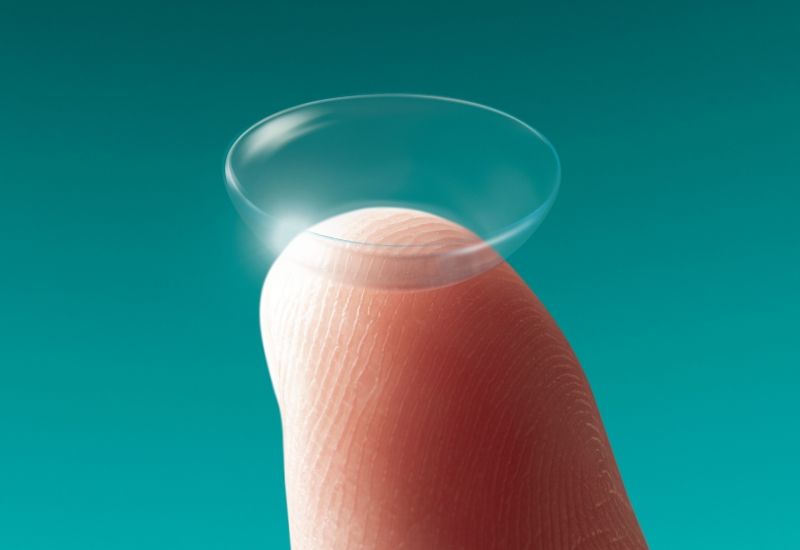Contact lenses have become a popular accessory for both fashion and vision correction in modern life. However, wearing them doesn’t always go smoothly. One of the most common issues is developing red eyes from contact lenses. This problem is not only uncomfortable and unattractive but can also lead to serious complications if not addressed properly. Here’s a guide on what causes red eyes from contact lenses and how to effectively treat it.
1. Causes of Red Eyes When Wearing Contact Lenses
Understanding the root causes of red eyes from contact lenses is crucial for determining the appropriate treatment. Several factors can lead to this condition, including:
– Lack of Oxygen: Wearing contact lenses for too long or using ill-fitting lenses can prevent the cornea from getting enough oxygen, leading to irritation and redness.
– Dry Eyes: Contact lenses may reduce the amount of natural tears produced, resulting in dryness, which irritates the eyes and makes them red.
– Allergic Reactions: Some individuals are allergic to the materials used in lenses or the cleaning solutions. Allergic reactions often present with red, itchy, and watery eyes.
– Infection: Poor hygiene practices, such as not cleaning your lenses or using dirty hands to handle them, can introduce bacteria into the eyes, leading to infections. This can cause redness, swelling, and pain.

There are several reasons you might be getting red eyes from contacts.
2. How to Get Rid of Red Eyes from Contact Lenses
2.1. Non-Medicated Solutions
The first step in managing red eyes from contact lenses is to stop wearing them immediately. Continuing to wear lenses when your eyes are irritated can worsen the condition. Here are some simple steps to follow:
– Remove the Lenses Immediately: This is the most critical action. Keeping the lenses in while your eyes are irritated can aggravate the situation.
– Rinse Your Eyes with Saline Solution: Use a sterile saline solution to flush out any debris or irritants from your eyes. You can find saline solutions at your local pharmacy or make your own by mixing a quarter teaspoon of salt with a cup of boiled water (make sure it’s cooled before use).
– Use Artificial Tears: Lubricating eye drops, also known as artificial tears, can help keep your eyes moist and reduce irritation. Be sure to choose products compatible with contact lenses and follow the usage instructions.
– Apply a Cold Compress: Gently applying a clean, damp cloth to your eyes for 10 to 15 minutes can reduce redness and swelling, providing relief.
– Increase Omega-3 Intake: Omega-3 fatty acids, found in foods like salmon, flaxseeds, and chia seeds, have anti-inflammatory properties that can help with dry eyes. You can incorporate these foods into your diet or take supplements, but it’s best to consult a doctor before starting any new supplement regimen.

Omega-3-rich foods like salmon, flaxseeds, and chia seeds help reduce inflammation and improve dry eyes.
2.2. Medicated Treatments for Red Eyes from Contact Lenses
If non-medicated approaches don’t help, or if symptoms persist, medical intervention may be necessary:
– Antihistamines: If your red eyes from contact lenses are caused by an allergic reaction, your doctor may recommend antihistamines in the form of eye drops or oral medication to relieve symptoms.
– Antibiotics: If an eye infection is causing the redness, your doctor may prescribe antibiotic drops or oral medication to treat the infection and prevent further complications.

Proper use of contact lenses helps prevent red eyes, irritation, and other related issues.
3. Preventing Red Eyes While Wearing Contact Lenses
Prevention is key to avoiding red eyes when wearing contact lenses. Here are some helpful tips:
– Choose the Right Lenses: Consult with an eye care professional to ensure you’re using lenses that suit your eyes. High-oxygen permeable lenses or silicone hydrogel lenses are often recommended for those prone to dry or red eyes.
– Practice Good Hygiene: Always wash your hands with soap and water before touching your lenses. Dry your hands with a lint-free towel to prevent bacteria from transferring to your eyes.
– Avoid Wearing Lenses in Water: Swimming or showering with lenses increases the risk of eye infections. If necessary, use swim goggles to protect your eyes.
– Don’t Sleep with Your Lenses: Unless you’re using lenses designed for overnight wear, always remove them before going to bed to allow your eyes to rest and reduce the risk of infection.
– Use Artificial Tears Regularly: Keep your eyes hydrated by using artificial tears throughout the day, especially if you’re in a dry environment or using digital devices frequently.
– Follow the 20-20-20 Rule: To give your eyes regular breaks, every 20 minutes, look at something 20 feet away for 20 seconds.
– Maintain Proper Lens Hygiene: Always clean and store your lenses according to the manufacturer’s instructions. Avoid using tap water to clean your lenses, as it may contain harmful bacteria.
– Replace Lenses on Time: Different lenses have different lifespans, and it’s important to follow the replacement schedule to avoid protein buildup and bacterial contamination.
– Get Regular Eye Exams: Make sure to visit your eye doctor at least once a year to ensure your eyes are healthy and your lenses are appropriate for your needs.
While red eyes from contact lenses are common, they are usually manageable and preventable. By understanding the causes and applying the right treatments, you can enjoy wearing your lenses comfortably. However, if your red eyes persist or are accompanied by severe symptoms such as pain or vision changes, consult your eye care professional immediately. Your eyes are precious—take the time to care for them properly!








